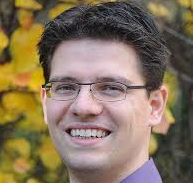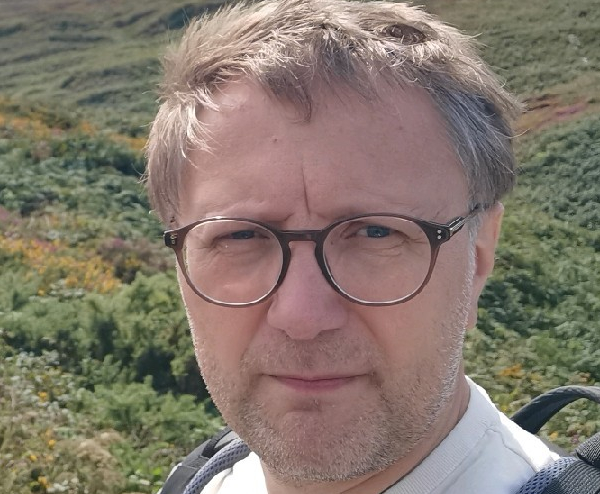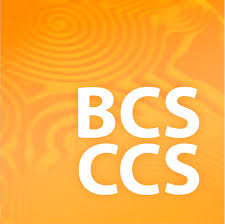DOOCN-XVII: Nonlinear Network Dynamics: Complexity and Control
Conference on the Occasion of the 75th Birthday of Eckehard Schöll, Berlin, May 4 – 6, 2026
The workshop will be held in the Auditorium of the Berlin Institute of the Physikalisch-Technische Bundesanstalt (PTB, National Metrology Institute), Abbestrasse 2-12, 10587 Berlin
The Dynamics On and Of Complex Networks (DOOCN) workshop series aims at exploring nonlinear dynamics on and of complex networks. Dynamics on networks refers to different types of cooperative phenomena that take place on networks, like spreading, diffusion, and synchronization. Modeling such processes is strongly affected by the topology and temporal variation of the network structure, i.e., by the dynamics of networks.
Nonlinear dynamics and complex collective behavior is a widespread phenomenon occurring in dynamical networks of nonlinear oscillators in a variety of natural and technological systems. Dynamical network theory deals with systems composed of many subsystems like atoms, photons, cells, neurons, etc., and shows that cooperation of the subsystems leads to complex spatial, temporal, or functional structures by self-organization. An important aim is to control the dynamics and steer it to a desired state. One example is synchronization, which leads to various partially or fully synchronized scenarios emerging in networks of statically or adaptively coupled nonlinear oscillators. Power grids, as well as neuronal networks with synaptic plasticity, and physiological networks of the immune system and the organs, describe real-world systems of tremendous importance for our daily life. An intriguing example of partial synchronization patterns are chimera states which consist of spatially coexisting domains of coherent (synchronized) and incoherent (desynchronized) dynamics, i.e., seemingly incongruous parts. Another aspect is the role of time-delayed coupling in controlling these patterns, and on the subtle interplay of local dynamics, delay, and the network structure. Although this field of research is fundamental, it has many applications across disciplines in physics, chemistry, biology, medicine, neuroscience, ecology, technology, and socio-economic systems, for instance pathological states (epilepsy, Parkinson) or cognitive functions (learning, memory, musical perception) of the brain, or the stability of power grids with respect to perturbations. Applications of data science and in particular machine learning to reconstruct network states from measurements and critical transitions are also an issue. The conference is organized on the occasion of the 75th Birthday of Eckehard Schöll who is a pioneer in the field.The 17th edition of the DOOCN workshop, “DOOCN-XVII: Nonlinear Network Dynamics: Complexity and Control; will be held on May 4-6, 2026 and will take place in Berlin, Germany.
REGISTRATION: In order to register to the conference please click the following LINKOrganizers










Sponsors


History
The first Dynamics On and Of Complex Networks (DOOCN I) took place in Dresden, Germany, on 4th October 2007, as a satellite workshop of the European Conference on Complex Systems 07. The workshop received a large number of quality submissions from authors pursuing research in multiple disciplines, thus making the forum truly inter-disciplinary. There were around 20 speakers who spoke about the dynamics on and of different systems exhibiting a complex network structure, from biological systems, linguistic systems, and social systems to various technological systems like the Internet, WWW, and peer-to-peer systems. The organizing committee has published some of the very high quality original submissions as an edited volume from Birkhauser, Boston describing contemporary research in complex networks.
After the success of DOOCN I, the organizers launched Dynamics On and Of Complex Networks â II (DOOCN II), a two days satellite workshop of the European Conference of Complex Systems 08. DOOCN II was held in Jerusalem, Israel, on the 18th and 19th September 2008.
DOOCN III was held as a satellite of ECCS 2009 in the University of Warwick, UK on 23rd and 24th of September. In continuation, DOOCN IV was held again as a satellite of ECCS 2010 in the University Institute Lisbon, Portugal on 16th September.
DOOCN V was held as a satellite of ECCS 2011 in the University of Vienna on 14th â 15th September 2011.
DOOCN VI took place in Barcelona, as a satellite to ECCS 2013, and focused on Semiotic Dynamics in time-varying social media. As DOOCN I, the other five DOOCN workshops counted with a large number participants and attracted prominent scientist in the field.
DOOCN VII, held in Lucca as a satellite to ECCS 2014, focused on Big Data aspects. DOOCN VIII was held in Zaragoza with focus also on BigData aspects.
The 9th edition of DOOCN was held in Amsterdam at Conference on Complex Systems (CCS) with the theme “Mining and learning for complex networks”.
The 2017 edition of DOOCN was held in Indianapolis USA in conjunction with NetSci 2017.
The 2018 edition of DOOCN XI was held in Thessaloniki, Greece at Conference on Complex Systems (CCS) with the theme “Machine learning for complex networks”.
The 2019 edition of DOOCN XII was held in Burlington, Vermont, USA in conjunction with NetSci 2019 with the theme “Network Representation Learning”.
The 2020 edition of DOOCN XIII was held online in conjunction with NetSci 2020 with the theme “Network Learning”.
The 2023 edition of DOOCN XIV was held online in conjunction with Statphys28 with the theme “Cascading Failures in Complex Networks”.
The 2024 edition of DOOCN XV was held in Florence, Italy, in conjunction with Compeng24 with the theme “Dynamical Multiscale Engineering of Network Architecture”.
The 2025 edition of DOOCN XVI was held in Florence, Italy, in conjunction with CNS*25 with the theme “Population activity : the influence of cell-class identity, synaptic dynamics, plasticity and adaptation”.
DOOCN Book Series
The organizing committees of the DOOCN workshop series have published three Birkhauser book volumes, from selected talks from the series.
- Dynamics On and Of Complex Networks: Applications to Biology, Computer Science, and the Social Sciences (2009)
- Dynamics On and Of Complex Networks, Volume 2: Applications to Time-Varying Dynamical Systems (2013)
- Dynamics On and Of Complex Networks III: Machine Learning and Statistical Physics Approaches (2019)